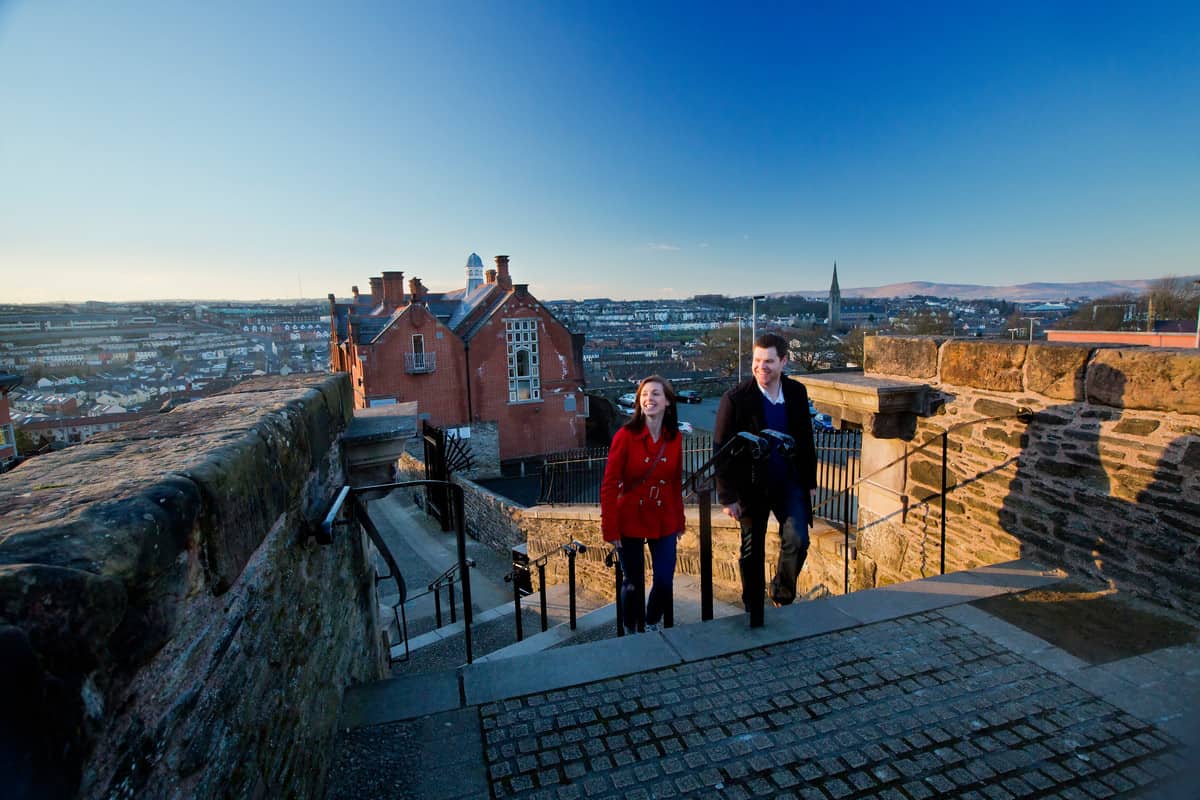On a blustery evening in late fall, I sat down to dinner in what’s been voted “the Best Gastro Pub in Ireland” – the multiple award-winning Walled City Brewery in Derry, Northern Ireland. Opened in 2015, it’s the first craft brewery to be built close to Derry’s city centre in more than 100 years. But even more significant is its location: Walled City Brewery is housed in the former British Army Barracks on Ebrington Square on the east bank of the River Foyle, where the 8th Infantry Brigade was based during The Troubles, the three-decade sectarian conflict (1968 to 1998) between Catholics and Protestants that saw innocent people killed and the city asunder torn asunder.
The conflict in the streets has ended; the strife, largely over. Ebrington Square is no longer a military base. In fact, it’s now an 11-hectare cultural and entertainment complex with restaurants, shops – there was even a ferris wheel during my visit.
What I fixated on that night at dinner wasn’t the excellent gastro pub fare or the revelry outside (the Irish can definitely party!) or the hoppy beer brewed on the premises, but rather, how I reached the restaurant: by way of The Peace Bridge.
Remembrance Day approaches as I write this, and I can think of no greater symbol of peace-at-the-end-of-conflict than the 235-metre long architectural wonder over the River Foyle, linking the mostly Catholic city center of Derry on the west bank to the more Protestant Waterside enclave on the east bank.

The Peace Bridge, a 14 million pound project, officially opened in 2011. The S-shaped, four-metre-wide curvy bike and pedestrian path stretches from the Guild Hall of Derry City to Ebrington Square and St. Columb’s Park on the far side of the River Foyle, important landmarks in the fourth-largest city on the island of Ireland. It’s an architectural wonder, incorporating a pair of self-anchored suspension bridges which overlap visually and structurally at the middle of the River Foyle, evoking a sense unity. Many call it an “architectural handshake.”
It wasn’t lost on me that the Peace Bridge is reserved for pedestrians and cyclists. There’s no passing anonymously inside closed vehicles; that invariably means eye contact and spontaneous greetings for those crossing on bikes or on foot. It’s a shared link between two sides of the river, communities which in the past had been at conflict with each other. Even the shape of the Peace Bridge has meaning. As Mayor of Derry John Boyle explained: “The curved shape of the bridge was intentional. The road to peace is never a straight line.”
That resonates deeply with me as I reflect on Remembrance Day: peace at the end of a turbulent conflict.

It’s this message of peace and hope that tour guide Martin Kerr speaks of as he escorts visitors along the Walls of Derry (built in the 17th century), through the Bogside enclave (known for its murals that honour lives lost during The Troubles), and to the historic Guild Hall. “We don’t gloss over our past,” Kerr said. “I lived through those difficult times. I saw the losses. But today I see hope. It’s peace that we all want, especially for our children.”
In true Irish form, Kerr adds levity to his discourse by sharing a much-told joke: “A stranger is accosted one night in a city ghetto in Northern Ireland by thugs who demand to know whether he’s Protestant or Catholic. Worried about the repercussions of his answer, the man replies, ‘I am a Jew,’ to which the dimwitted thugs reply: 'That's all very well, but are you a Protestant Jew or a Catholic Jew?'"
For many observers, the building of the Peace Bridge in 2011 signalled a turning point for the Northern Ireland city. Derry was the United Kingdom’s first City of Culture in 2013 and, in 2017, launched a joint bid with Belfast to be named the European Capital of Culture for 2023. Whether that bid is successful or not, Derry has become a symbol of peace around the world.
Look no further than the bridge the unites two sides of the river in the heart of the city.


